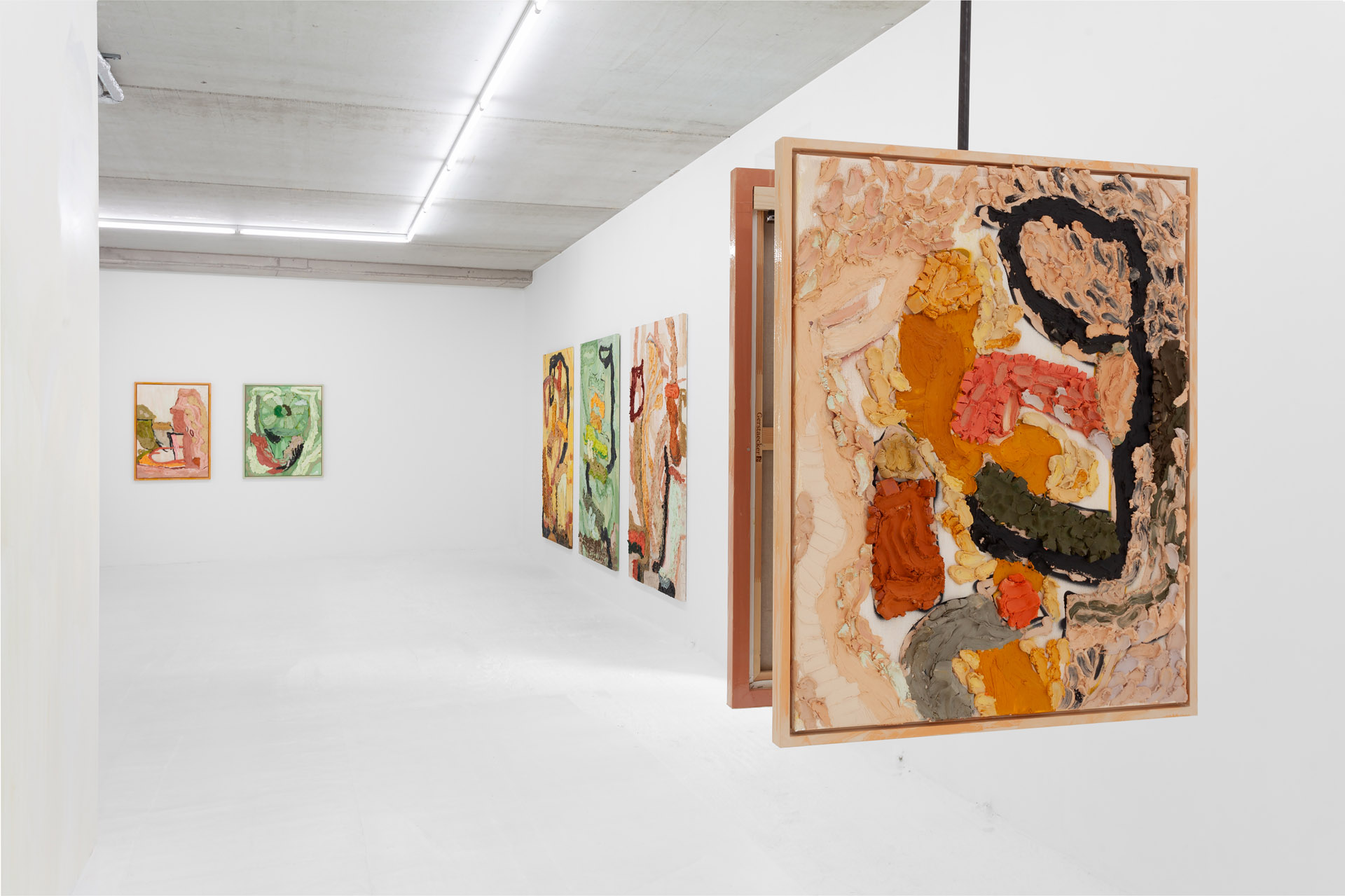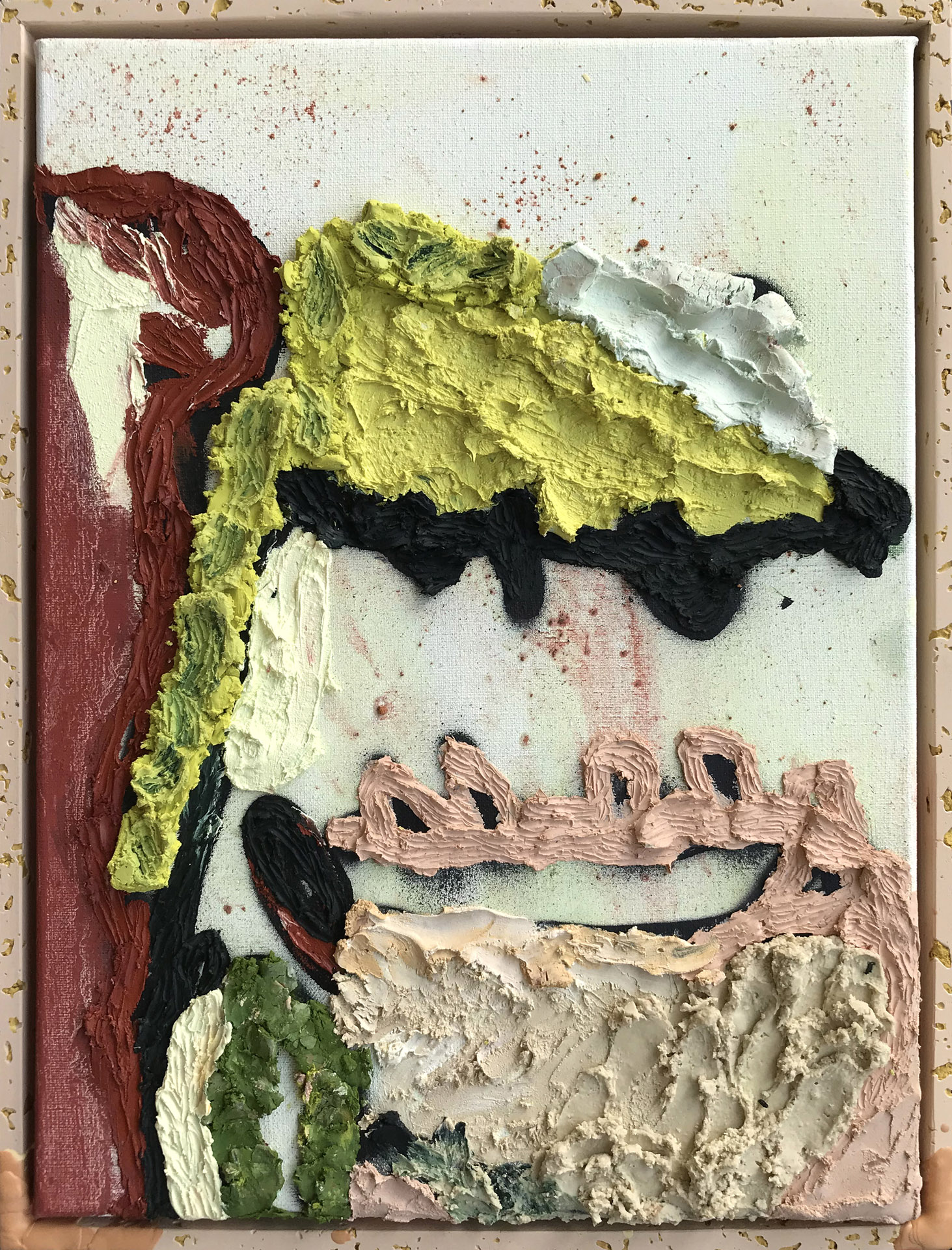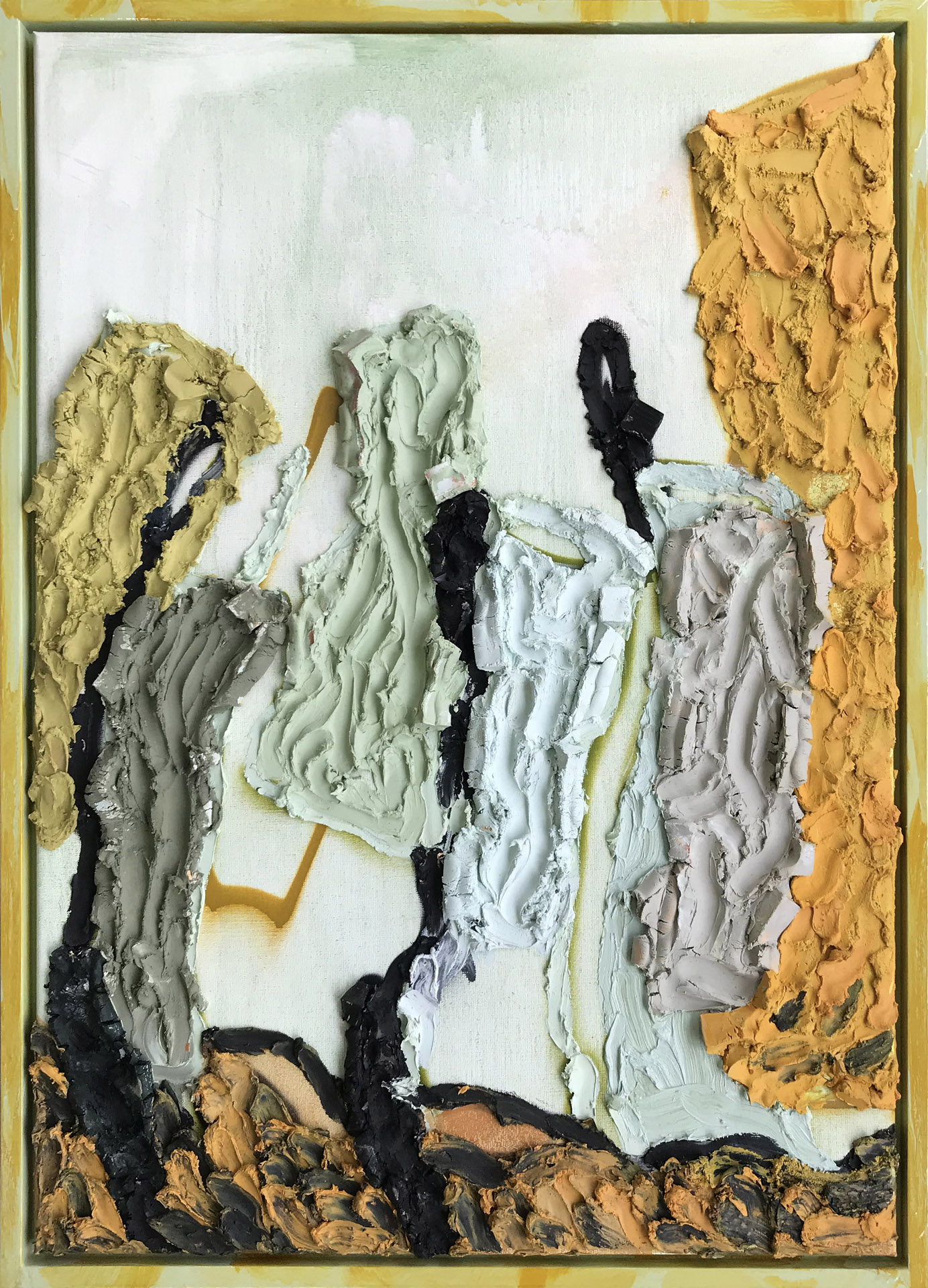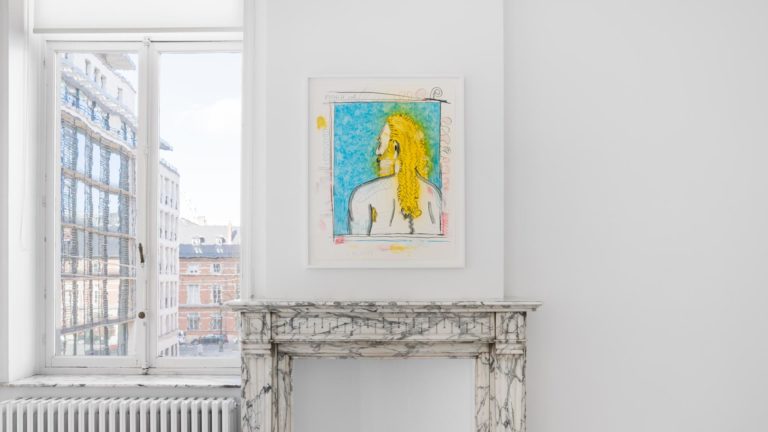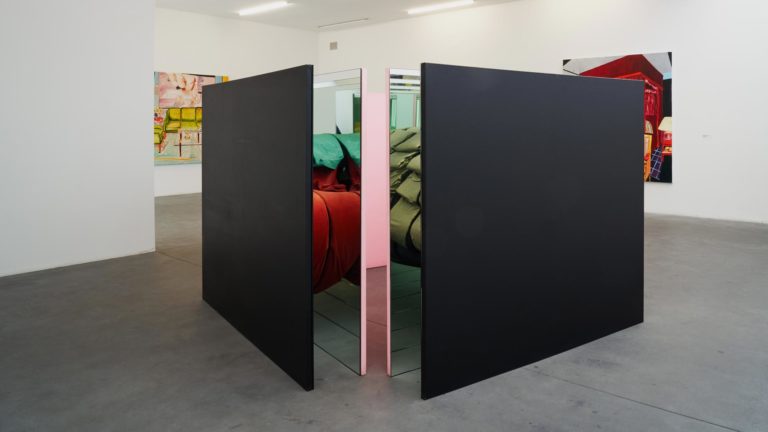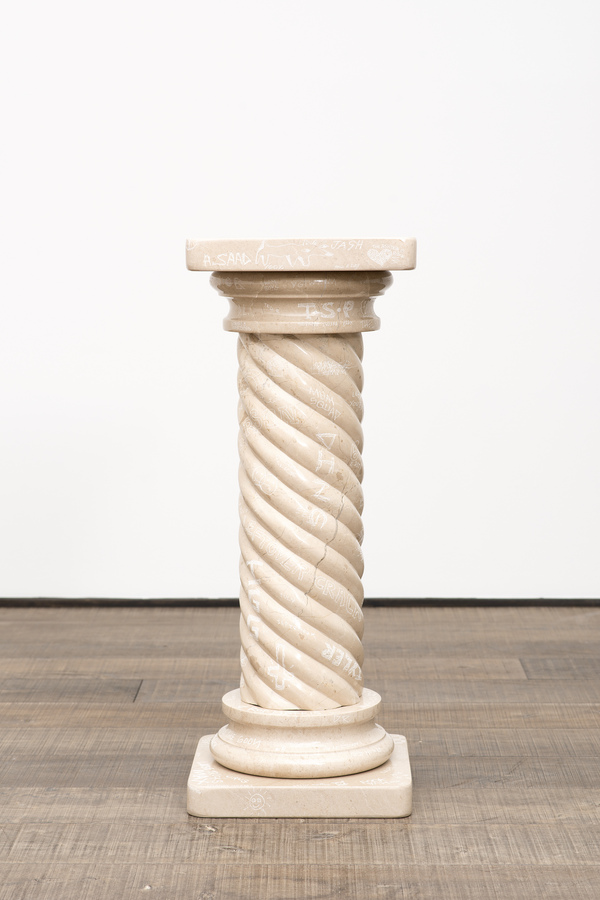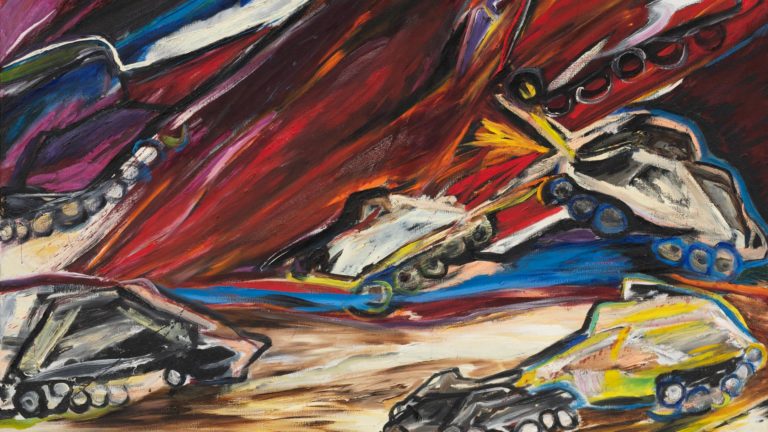Artist: Natacha Mankowski
Exhibition title: Soil Is Concrete
Venue: Everyday Gallery, Antwerp, Belgium
Date: September 4 – October 9, 2021
Photography: Silvia Cappellari, Seppe Elewaut / all images copyright and courtesy of the artist and Everyday Gallery, Antwerp
Aidipsos is a small village located on the Greek island of Evia. As Greek mythology would have it, the hot springs for which the coastal village is well-known were created by Hephaestus, the volcanic god of metallurgy, in honor of Athena and Heracles as a place to relax.
The hot springs of Aidipsos are also the inspiration for the new paintings that Natacha Mankowski (b. 1986) presents in her solo show at Everyday Gallery. In the summer of 2020, the painter spent a few days at the mythical hot springs. Subsequently, she began researching the site. Collecting soil samples, mapping the geography, and studying the micro-ecology of Aidipsos, the outlines for Mankowski’s project at Everyday Gallery began to take shape. With a pallet inspired by the unique colors that the clay ground and the water in and around the springs acquire from minerals like potassium (chrome yellow), magnesium (silvery white), and iron (rusty red), she explores what takes place at the intersection of the human need to relax and the fragile micro-ecology of Aidipsos. Once a rustic place, what happens when the all-encompassing tourist industry engulfs this fragile micro-ecology? This touches upon a central concern in Mankowski’s paintings, namely: how do humans inhabit spaces at the intersection between nature and culture?
Trained at the École Spéciale d’Architecture in Paris, Mankowski worked as an architect alongside Jean Nouvel and Vito Acconci before turning to painting. Her architectural background still resonates strongly in her paintings. Defying the boundaries between different artistic disciplines, Mankowski’s work is characterized by an exuberant use of the impasto technique. The way she employs this technique allows her to create textural and spatial structures in her paintings that moves them into the realm of sculpture. In her new work for Everyday Gallery, Mankowski has intensified this spatial and sculptural effect by working with larger formats. With many of these new paintings weighing 15 to 20 kilograms and more, they acquire a singular sense of gravity and presence; indeed, these paintings are objects that themselves inhabit a space alongside the viewers.
To address the question of how humans inhabit space at the intersection of nature and culture, Mankowski has developed her own visual and compositional language. While her compositions may seem abstract to the casual viewer, they are somewhat reminiscent of blueprints and ground maps widely used in architectural design and urban planning. This is no coincidence: many of her paintings are loosely inspired by the ground maps of the quarries she visited during her years as an architect.
Mankowski takes a keen interest in sites such as stone quarries, from which architects and builders collect their raw materials. Midway between nature and the built environment, quarries are transitional sites in which natural resources are excavated and turned into raw commodities to be used in buildings, but also cell phones, computers, and other modern technologies. So as much as we would like to believe we are far removed from nature, through these rough materials we are intrinsically connected to it. And as such, the mines and quarries where these materials are found also raise difficult questions about how humans have turned nature into a site for commodification, a process that has brought us high-tech and the urban environment but has also triggered ecological ruin and collapse.
Inspired by these issues, Mankowski has explored and visited many of these quarries, paying close attention to their geographical lay-out and the specific selection of raw materials on site. She then uses samples of these raw materials to create the thick impasto paint that texture her painterly work.
In her show for Everyday Gallery, she has employed the same technique, but this time with the unique ecological site of the hot springs of Aidipsos as her starting point. While Aidipsos is not a quarry, the touristic turn the place has taken over the last decades and what it does to the environment while also bringing so much joy to so many people, is comparable. Here, too, we find humans interacting with natural resources, commodifying them not for the collection of raw material but for the purpose of relaxation and rejuvenation. And always at the risk of destroying them.
Text by Bram Ieven





